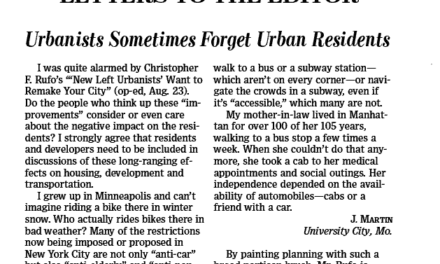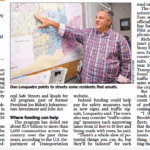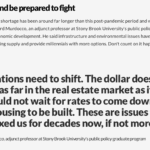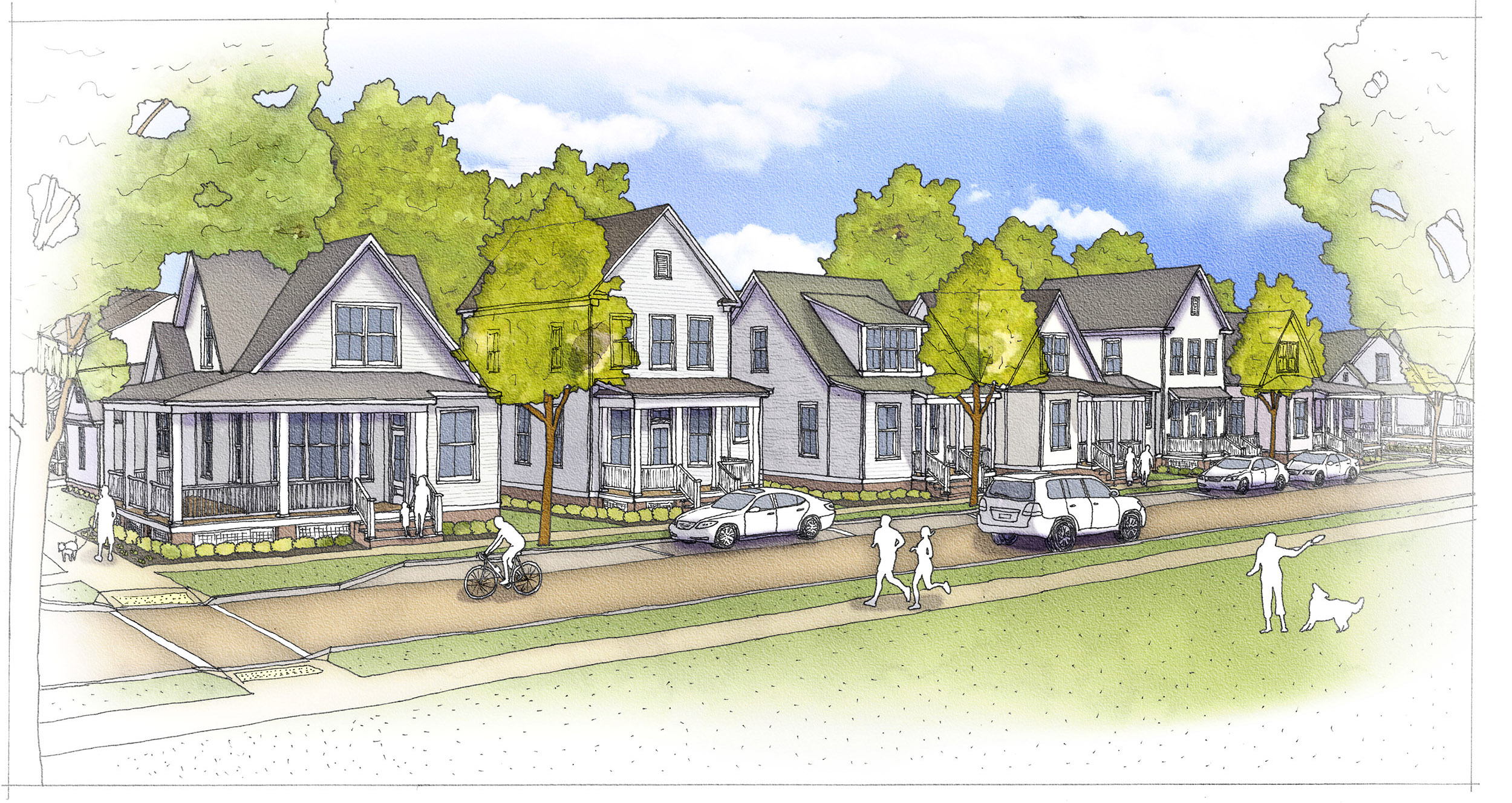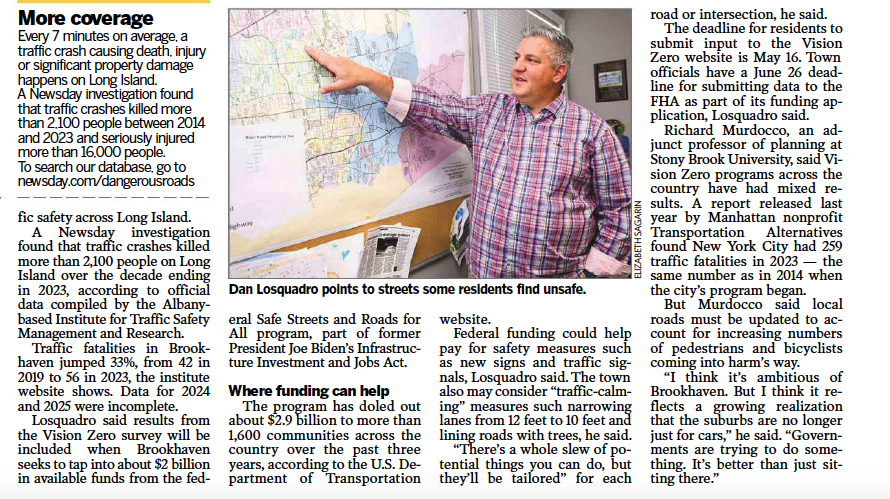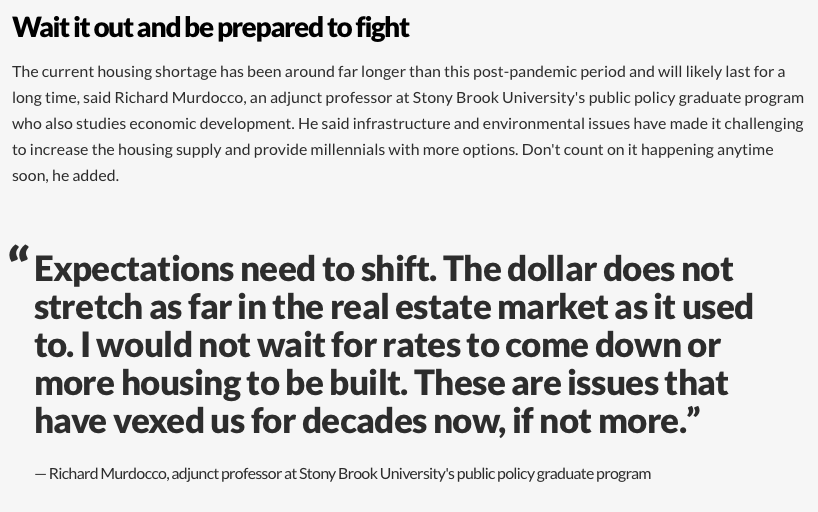The following was published on Long Island Business New’s Young Island on 3/20/13:
Last Wednesday, I proposed to my girlfriend Arielle. Despite how much I ramble on about the aquifers, density and transit-oriented development (As you can tell, I am a fun date), she said yes. I couldn’t be happier or luckier.
Furthering my streak of life milestones, in the next few months we’ll be moving to Syosset, NY. As a proud, lifelong resident of Suffolk County, I hope I can adapt to the notion of having these things I hear Nassau County has called “sidewalks”, “sewers” and other readily-available amenities (a 24-hour bagel place?! Who knew! God Bless America!)
My fiancée will be graduating this May with her Masters in Music Education from Hofstra University, and has already begun hunting for jobs within the Nassau-Suffolk region. I plan on continuing to work on Long Island as well. We plan on staying on Long Island for the long-run. Thinking about all of the happy news, I realized something: the life that my fiancée and I are working to create is abnormal for young professionals who grew up on Long Island. It sort of made me sad.
We’re looking to carve out a life in suburbia- not Astoria, Queens, Williamsburg, Brooklyn or wherever else so many of our friends and others have chosen to relocate to. There is a reason for why many leave- the region is no longer structured for sustaining a young couple.
Long Island’s Young Islanders need both jobs, and affordable, attractive housing options. While jobs are difficult to come by, I am optimistic that there is opportunity for resourceful candidates in either Nassau or Suffolk Counties. The problem isn’t necessarily the availability of employment, but I feel it is more the lack of availability of affordable shelter.
The issue of affordable housing is a monumental challenge that planners have grappled with for over fifty years. We have to remember that despite all of the discussion and analysis of the “brain drain” we all hear so much about, there is a silent majority of Young Islanders that want to both work and live on the Island. Our housing policies need to reflect this population of young professionals who are staying. In fact, planner Seth Forman wrote a great pieceon how Long Island’s young population is actually growing thanks to fluctuations in the regional birth and death rate.
Anecdotally, our friends often ask why we both want to stay on Long Island. Our answer is normally a collective “Why wouldn’t we stay?” Think about it- we have amazing schools, quality of life and 24-hour bagel places. We’re close to New York City, but still have space to relax and escape the confines of the urban environment when needed.
Despite the perks of the suburbs, there is the fact that housing on Long Island is difficult to find with rents approachable for single tenets or couples just starting out. I am lucky to have a wonderful housing opportunity in Nassau become available- others are not. Countless Young Islanders either are forced to live at home or move west because the cost of living on Long Island is unapproachable. Between utilities, the cost of commuting and rent, costs add up quickly for young professionals- making it difficult to stay here without familial support.
I firmly believe that we are not handling the affordable housing problem correctly. Last year, I attended a wonderful summit on the issue by the Suffolk County Department of Planning at SUNY Stony Brook. The presentations and panels dissecting the topic were fascinating, and the event gave me new perspectives to the challenges of solving an almost unsolvable problem. Reflecting on the summit a year later, I am sad to report that none of the solutions presented really gained traction. The song still remains the same- NIMBY, restrictive zoning and a hearty cocktail of other factors prevent the housing we need from being constructed.
It all makes sense though- the crowd was comprised of elected officials, advocates and more of the usual players who attend these types of functions- aka people who have seen and heard this all before, yet leave these events (and countless others like them) and more of the same occurs. It continues to be a twisted case of preaching to the choir, except that the choir didn’t listen to what is being preached and continue to build more “affordable” units out of reach for most. The development process should be opened to go beyond the usual suspects- young, old and everyone in between should participate in the formulation of housing policy. We’re literally ignoring large swaths of the population who need housing.
When we do build affordable units, we’re not exactly addressing our regional problem. Between 1980 and the year 2000, 97% percent of Long Island’s affordable housing stock was built in 10% of the Island’s census tracts, helping to further create concentrated centers of poverty and blight. We’re barely chipping away at the problem and creating countless others at the same time.
As a regional community, we need to standardize our approach. We have to strictly define what is considered “affordable.” Is 130% of Area Median Income (AMI) “affordable” to a struggling family, or young professional? What constitutes the “area” in which the AMI is based off of? Do HUD’s metrics in measuring affordability genuinely reflect the cost of living and salaries of Long Islanders? Why do some developers use the entire tri-state area for their AMI measure, while others use Nassau-Suffolk? Should the numbers be more localized to township, or even census tract?
Before we make any progress on solving this complex problem, these questions need to be addressed. Next, we have to quantify the problem. How many truly affordable units does each municipality build annually? Instead of our current patchwork-quilt system of housing policies, maybe it’s time we take a comprehensive regional approach to help craft a starting point, and work our way out from there.
Like what should be done with the term “smart growth”, we should drop the buzzwords. Affordable housing is too important a topic to be relegated to being a term that rings hollow. When the word “affordable” is used in real estate marketing, public meetings and literature describing a project, there should be standardization and weight backing it up.
According to the Long Island Regional Planning Board, it is estimated that we need roughly 41,429 affordable housing units by the year 2035. The problem is old, but so are our approaches to solving it. It shouldn’t be that two young professionals in their mid to late twenties who chose to stay are the exception to the rule. Let’s start finally tackling the problem.
Richard Murdocco is the principal grantwriter for Community Development Corporation of Long Island, although the views expressed in this post are Murdocco’s alone and not shared by the CDCLI. Follow him on Twitter @TheFoggiestIdea.
P.S. – Thank you to my Arielle for saying yes.


